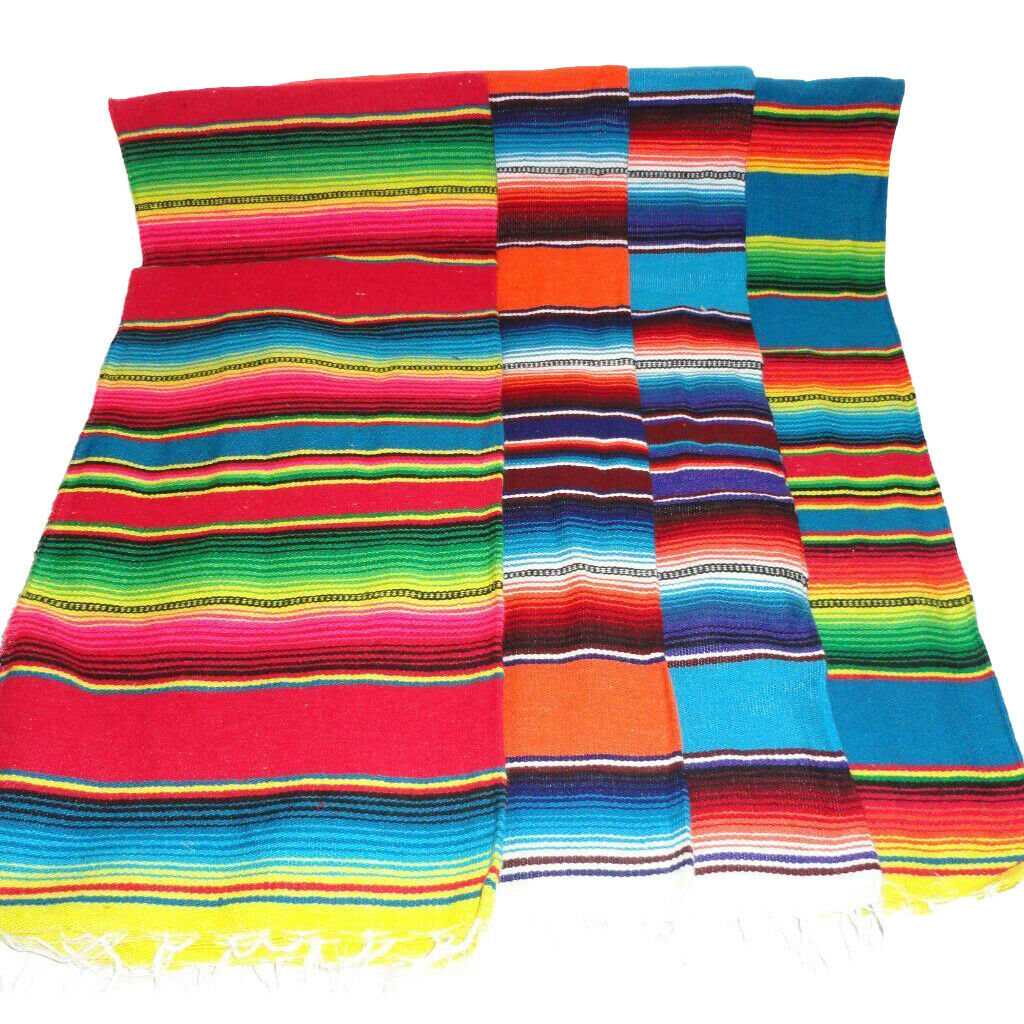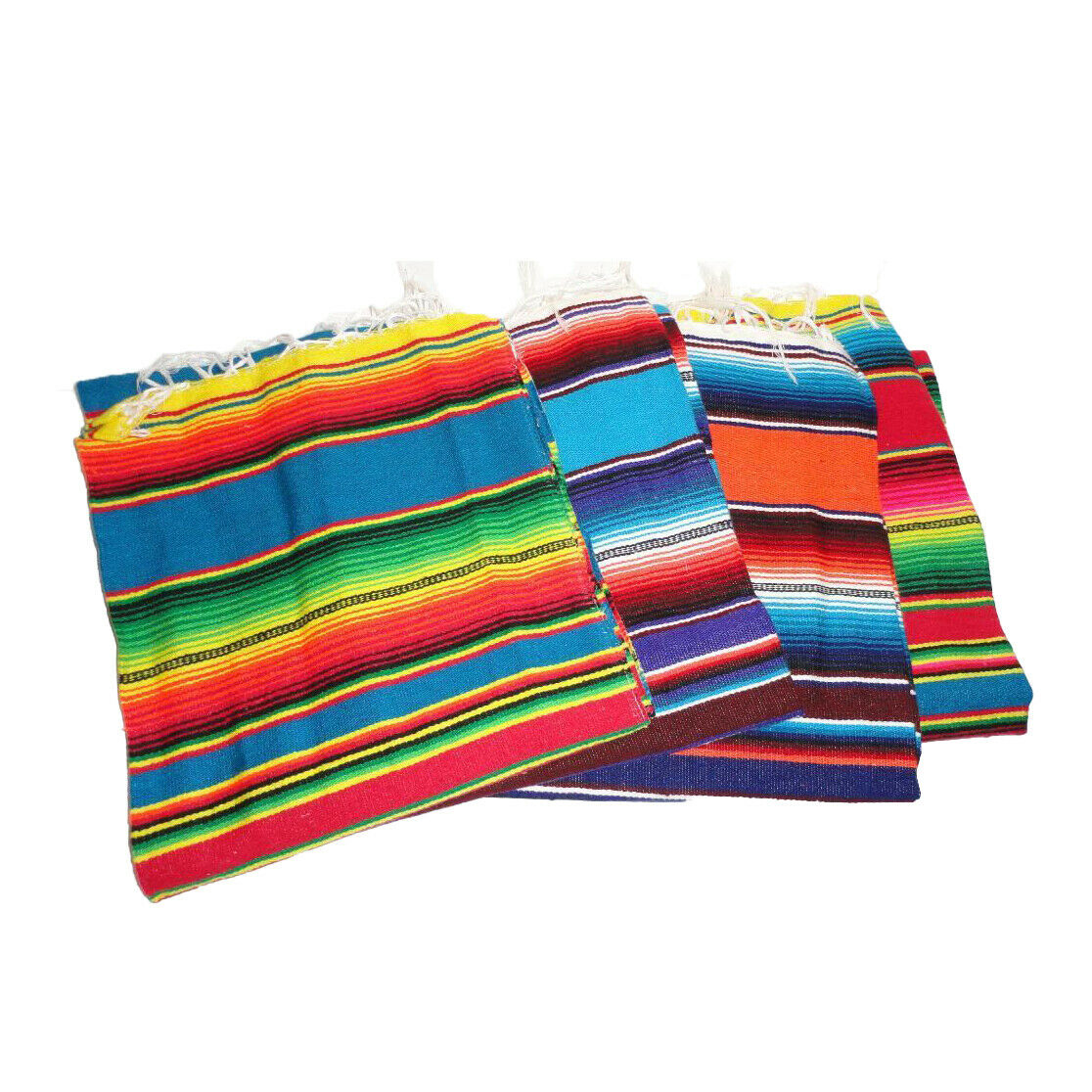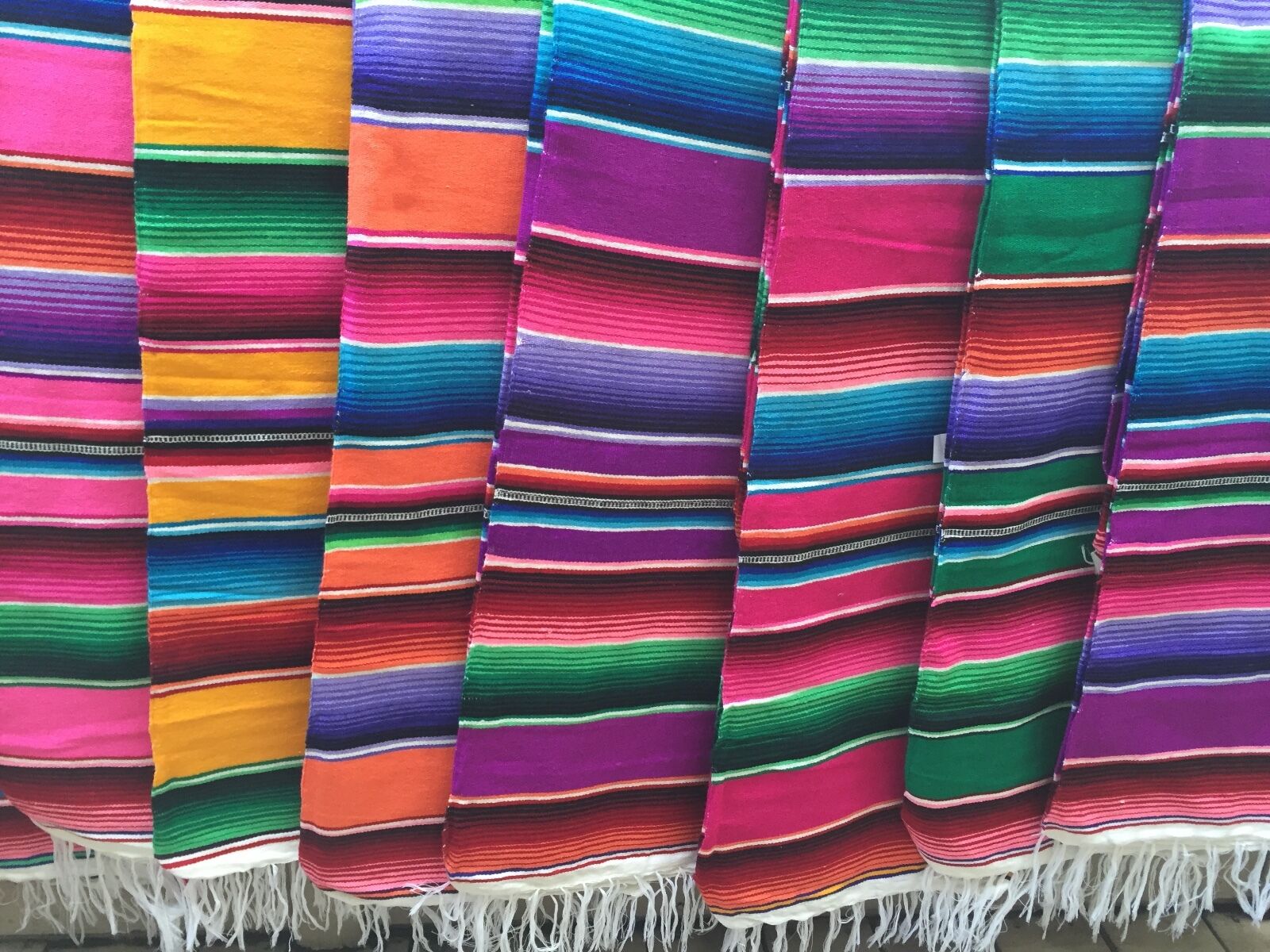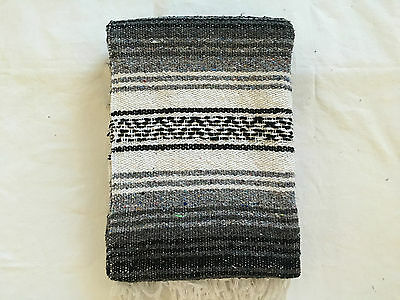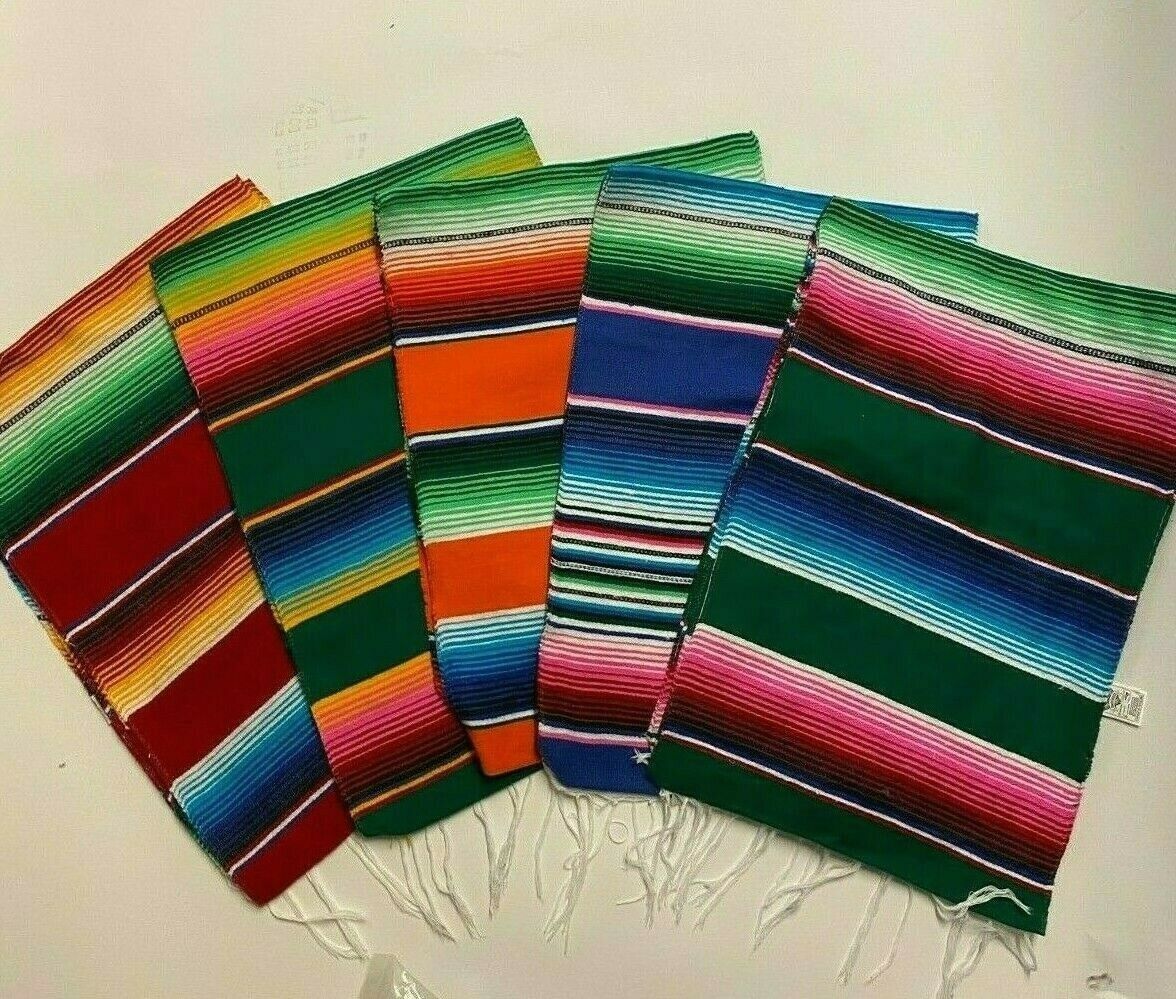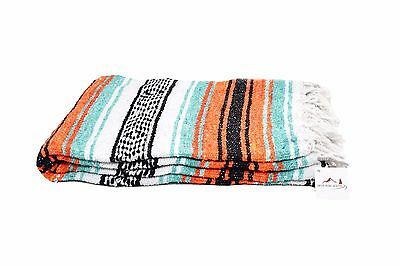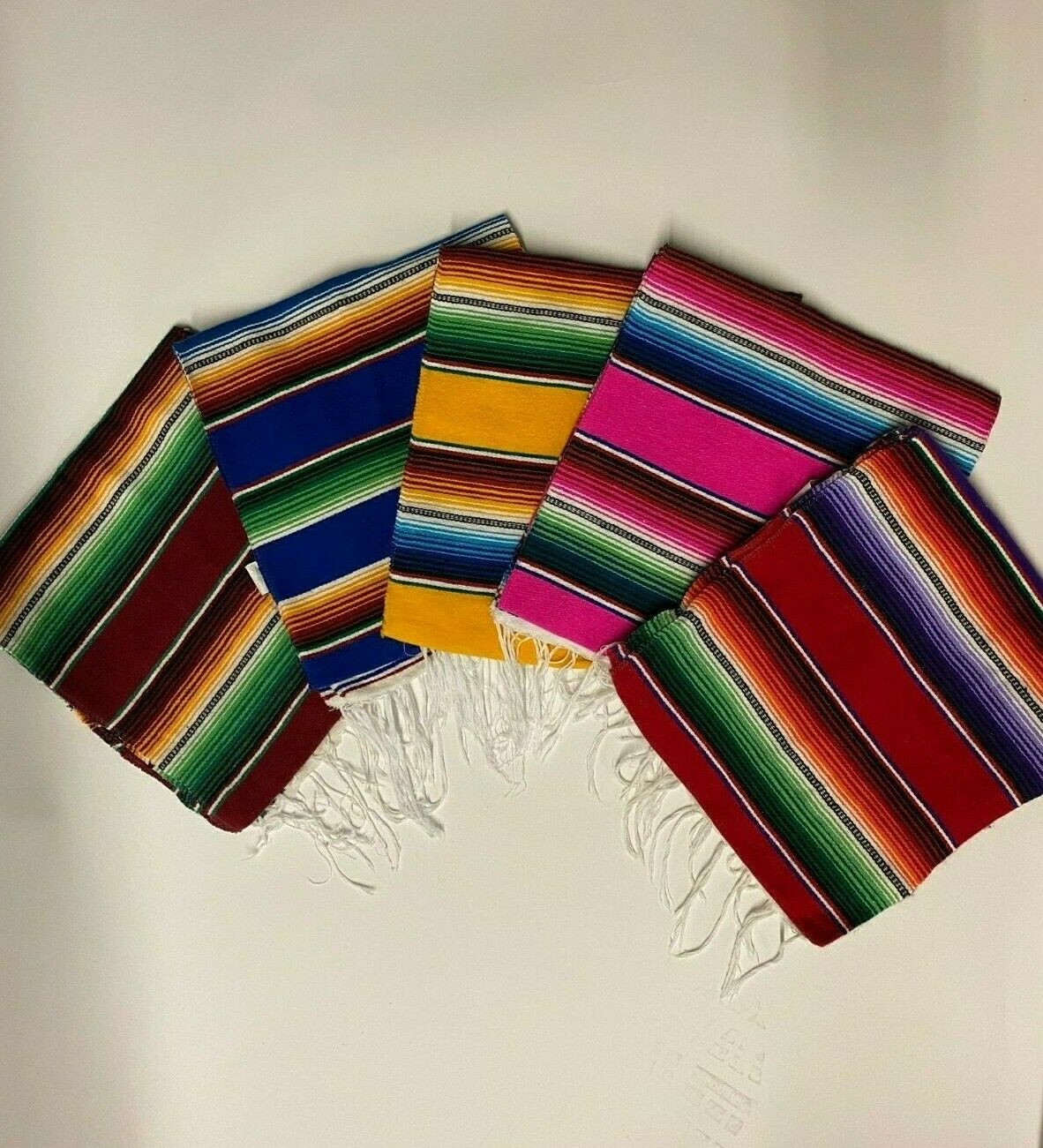-40%
VTG TEXACOCO WOVEN MEXICAN 22x45 SO. AMERICAN WEAVING RUG WALL RED BLACK WHITE
$ 39.59
- Description
- Size Guide
Description
You are bidding on a rare vintage rug with a design of a big square with a center diamond of black, blue and white from Texacoco, Mexico. The design appears to be a black and white design of stripes and squares on a red background, with black, white and blue diamonds. It looks like white S all around the white frame around the diamond. This rug measures 22 1/2" x 45" and is in fairly good condition; however, If you look closely, it appears to have some moth damage. There is a bit of red color on the white - see photos. This rug works as a rug or a wall hanging to add warmth to your home. I believe it is from Texacoco Mexico. The owner worked with several Indian Tribes across the US. The last photo shows that this rug has the original cloth tag stapled to the back that says hand made in Mexico.It ships via FedEx and will be insured for safe arrival.
I'm selling other rugs this week (including Texacoco, Chimayo, Navajo and others) and will be happy to combine shipping.
Thanks!
G
Texcoco
(
Classical Nahuatl
:
Tetzco(h)co
pronounced
[tetsˈkoʔko]
) was a major
Acolhua
altepetl
(
city-state
) in the central Mexican plateau region of
Mesoamerica
during the Late Postclassic period of
pre-Columbian
Mesoamerican chronology
. It was situated on the eastern bank of
Lake Texcoco
in the
Valley of Mexico
, to the northeast of the
Aztec
capital,
Tenochtitlan
. The site of pre-Columbian Texcoco is now subsumed by the modern
Mexican
municipio
of
Texcoco
and its major settlement, the city formally known as Texcoco de Mora. It also lies within the greater metropolitan area of
Mexico City
.
Pre-Columbian Texcoco is most noted for its membership in the
Aztec Triple Alliance
. At the time of the
Spanish conquest of Mexico
, it was one of the largest and most prestigious cities in central Mexico, second only to the
Aztec
capital,
Tenochtitlan
. A survey of
Mesoamerican
cities estimated that pre-conquest Texcoco had a population of 24,000+ and occupied an area of 450
hectares
.
The people of
Tetzcohco
were called
Tetzcocatl
[tet͡sˈkokat͡ɬ]
(singular) or
Tetzcocah
[tet͡sˈkokaʔ]
(
plural
).
History:
Texcoco was founded in the 12th century, on the eastern shore of
Lake Texcoco
, probably by the
Chichimecs
. In or about 1337, the
Acolhua
, with
Tepanec
help, expelled Chichimecs from Texcoco and Texcoco became the Acolhua capital city, taking over that role from
Coatlinchan
.
In 1418,
Ixtlilxochitl I
, the
tlatoani
(ruler) of Texcoco, was dethroned by
Tezozomoc
of
Azcapotzalco
. Ten years later, in 1428, Ixtlilxochitl's son,
Nezahualcoyotl
allied with the Mexica to defeat Tezozomoc's son and successor,
Maxtla
. Texcoco and the Aztecs of Tenochtitlan, with the
Tepanecs
of
Tlacopan
, subsequently formalized their association as the
Triple Alliance
. However this was an uneven alliance as
Tlacopan
entered the battle against Azcapotzalco late. Texcoco thereby became the second-most important city in the eventual Aztec empire, by agreement receiving two-fifths of the tribute collected while Tlacopan received one-fifth.
Texcoco was known as a center of learning within the empire, and had a famed library including books from older
Mesoamerican
civilizations.
The palace gardens were a vast botanical collection that included plants from not only the growing Aztec Empire but also the most remote corners of Mesoamerica. Remnants of the gardens still exist to this day and have recently been studied by a team of
Discovery Channel
scientists, who were able to demonstrate by means of modeling and computer simulation that the layout of the site had been carefully planned to be in alignment with astronomical events, with an emphasis on
Venus
, and not simply aligned with the cardinal directions as previously assumed.Erected by the hill of
Texcotzingo
, the royal residence had
aqueducts
, baths, gardens, stairways and over 300 separate chambers.
The water used to irrigate the gardens was obtained from the springs beyond the mountains to the east of Texcoco. The water was channeled through canals carved into the rock. In certain areas, rock staircases were used as waterfalls. After clearing the mountains, the canals continued downhill to a point a short distance from Texcotzingo. There the path to the city was blocked a deep canyon that ran from north to south. Nezahualcoyotl ordered that the gap be filled with tons of rocks and stones, thus creating one of the earliest major aqueducts in the New World.
Sacred hill
The whole hill of Texcotzingo was also served by this canal system and converted by his designers into a sacred place for the rain god
Tláloc
, complete with waterfalls, exotic animals and birds.
On the summit of the mountain he constructed a shrine to the god, laid out in hanging gardens reached by an airy flight of five hundred and twenty marble steps, a significant number, since according to Aztec mythology the gods have the opportunity to destroy humanity once every 52 years.
Rulers of Texcoco
Main article:
List of rulers of Texcoco
Xolotl was said to be the founder of Texcoco in 1115 AD and reigned until 1232. He was followed by Nopaltzin (1232–1263), Tlotzin (1263–1298), Quinatzin (1298–1357), Techotlalazin (1357–1409), Ixlilxochitl (1409–1418), Nezahualcoyotl (1420–1472), Nezahualpilli (1472–1516), Cacama (1517–1519), Coanchochtzin (1520–1521), and Don Fernando Ixtlilxochitl (1521–1531).
Nezahualcoyotl's son
Nezahualpilli
(1464–1515) continued the tradition of patronizing the arts.
Nezahualcoyotl
(1403–1473) was a noted poet, philosopher, and patron of the arts. He also had a large botanical and zoological garden, with specimens of plants and animals from throughout the empire and from the more distant lands with which the Empire traded.
In 1520 the troops of
Hernán Cortés
occupied the city and killed
Cacamatzin
, Nezahualpilli's son and the last independent
tlatoani
, installing
Ixtlilxochitl II
as a puppet ruler. Cortés made Texcoco his base and employed Texcoco warriors in the
Siege of Tenochtitlan
.
A descendant of the royal line,
Fernando de Alva Cortés Ixtlilxochitl
was an official during the colonial era and served as governor of Texcoco.
From 1827 to 1830, Texcoco was the capital of the
State of Mexico
.






